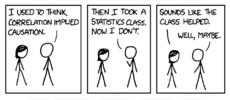Pretty sure this isn’t how it works. At the risk of looking like a fool (it’s never stopped me before): when you charge a car, you aren’t pumping electrons in. You are instead moving lithium ions from the cathode to the anode through the application of an electric field. You are forcing the existing electrons in the cathode to run through the charger circuit and reunite with the lithium ions in the anode. Likewise during discharge, you allow the electrons in the lithium ions to flow through the motor and reunite with those same migrating lithium ions that are now moving from anode to cathode.All right, guys. This is easy. E = m*c^2. A Model 3 battery pack is 75 kW-hr. That's good old energy. To get it into SI units, we have 3.6 MJ/kW-hr.
Speed-o-light is 3e8 m/s.
So, the amount of energy in a M3 battery pack is 75 * 3.6e6 = 270 MJ.
Then, m = E/(c*c) = 270e6/(3e8*3e8) = 3e-9 kg. Or, putting it into grams, we have 3e-6 g. Six micrograms of electrons for a M3 battery pack.
Now, where it might get mildly interesting is considering the masses of the individual electrons. A free-floating electron has mass, sure, but when it gets tucked into a close orbital around the nucleus of some atom or other energy gets radiated off and the mass of the single electron would thereby decrease.
But in this case it's electrons flowing in or out; and the energy state of individual electrons is whatever-they-are; the total increase in mass goes right back to Einstein. As I said, simple.
Funny thing, though: While the mass is negligible compared to the mass of the car or semi, it is, actually, measurable. There are commercial microgram scales all over. (Although a single flake of paint masses that much...)
--
Added: And the SO found the hole in the argument, such as it is: The fuel in a ICE-based semi might weigh a literal ton; but the batteries in a BEV-based semi do weigh, well a lot.
On the other hand: the ICE motor and transmission probably weigh a lot more than the motors and what passes for a transmission in a BEV-based semi..
Your energy to mass calculation, I believe, just calculated how much mass you’d have if you somehow converted the 75 kWh of bound up chemical energy of those anode lithium ions into matter. To do that you’d need some sort of energy to matter converter. That isn’t something that’s very common and certainly doesn’t live in an EV.




